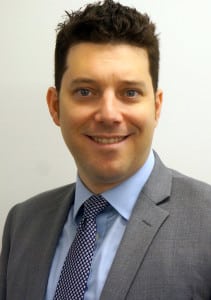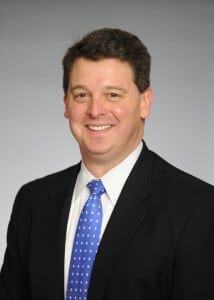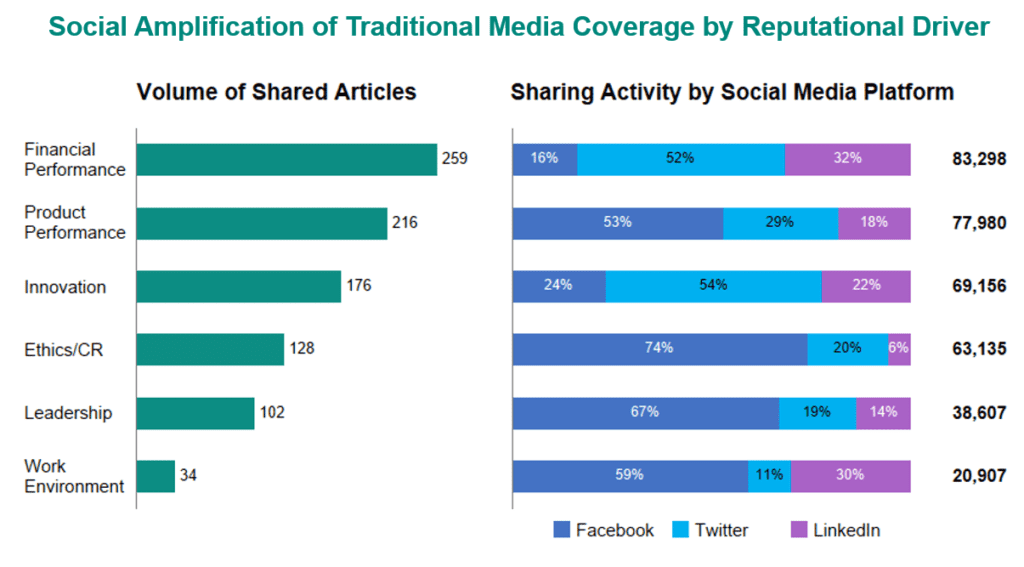
[Editor’s Note: In this first article of a five-part series produced with partner PublicRelay, a media monitoring and analytics firm, we will examine the common challenges of measuring communications data so it can be turned into useful insights that will help not only communicators but the business overall. We’ll start with a question: “What’s in it for me to think about insights?” Included is a look at how to move communicators from using data simply to prove the return on investment (ROI) of PR, known as reporting, to a strategic approach, where data is mined for business insights. We’ll end this article with a look at examples where brands in insurance, pharmaceuticals and financial services used communications data to provide business insights.]
On a micro level, some communicators shy away from data and measurement fearing, incorrectly, that their lack of mathematical competency will be exposed. How many times have you heard a PR professional tell you he or she pursued a PR career precisely to avoid using numbers? It is unfortunate that this erroneous assumption continues to hold sway in some quarters. One of the goals of this series of articles is to debunk that assumption.
Another fear of communicators who resist data: If they measure, data might show that certain of their PR efforts are failing. Worse, measuring data purely as a way to gauge ROI could indicate that PR is contributing too little to a company’s business goals. While both of those scenarios are possible outcomes, without seeking the insights data provides, such failings could continue interminably.
The good news is that many communicators are measuring and accessing data. Some, though, seem to be measuring from a position of fear. They’re almost solely in reporting mode, measuring data for ROI alone. As such they’re missing the potential of data to be applied strategically. They’re also eschewing data’s power to provide insights into how communicators and businesses can improve. In many cases, not only can communications data provide insights to raise brand awareness, it also can help drive leads and sales.
In this first of five articles, we speak with six communicators who advocate using communications data for deriving insights as opposed to merely proving ROI.
These executives also offer examples of why this mindset is critical in today’s business environment. In addition, they discuss how PR teams still using data mainly to prove ROI can shift their thinking so they are mining insights from analytics that can not only change the way communicators are operating but also contribute to a business’ revenue.
It’s not an accident that none of the brand communicators interviewed for this article described himself or herself as a “data person.” In fact, most of them felt that communications professionals could be taught what they need to know to make judicious use of data.
Data Insights: ‘What’s In It For Me?’

VP, PR,
ADP
The old marketing adage is that everyone’s favorite radio station is WIIFM, or What’s In It For Me? Similarly with data and measurement, the first question that skeptical communicators need answered is, “What’s in it for me to think about data insights?”
For many of those we spoke with, a major issue was using data to anticipate what might be ahead. If you’re using data only to “get a sense of how you’re doing today, you’re being reactive and somewhat backward,” says Michael Schneider, VP, public relations, at ADP, the payroll services company. Communicators, he says, need to be cognizant of data “to look forward…at what’s over the hill.”
There’s a more current element to seeking insights from data, adds Emil Janssens, who heads communications and marketing in North America for insurer Allianz Global. “Data-driven insights allow more informed decision making, which can help fine-tune your strategy, optimize your marketing and communications and generate more business.”
Measure Don’t Guess

Gone are the days when so much of communications involved guesswork, says Adam Snyder, VP, communications, at Mitsubishi UFJ Financial Group. “Now we have facts in the form of data…so if you’re not drawing conclusions and getting insights from data, then all you’re doing is guessing.”
Adds David Chamberlin, SVP & chief communications officer at PNC Financial Services Group, “I don’t have to stick my finger up into the wind…I have hard data” that shows, for example, the reporters and publications “most and least favorable to my brand…how well our messaging is being received and shared” and similar metrics for PNC’s competition.
For example, Chamberlin relates a situation recently where data changed his team’s behavior. Several stories about the brand that ran in a traditional media platform were driving significant social traffic for PNC. The brand initially thought these were “small, local stories” and they were largely ignored during planning meetings, he says. When figures in social measurement reports spiked, the team investigated, found the source and reacted accordingly, he says. “We know now that a certain type of content that we can provide resonates with audiences,” he says, “but we have to make sure it gets covered” by pitching it to media.

SVP, CCO,
PNC Financial Services Group
The example above shows also that tracking data, of course, also offers communicators insight about audiences. What do they care about? What are they thinking? What are they responding to? What’s their mood?
Molly James-Lundak, senior director, corporate digital marketing at pharmaceutical firm AbbVie, turns our original question on its head. “What’s the risk if I’m not looking for data insights? The risk is eventually someone’s going to ask you, ‘How do we know what’s working and what’s not?’” The wealth of data from social media analytics and traditional media “holds a lot” of the answers, she argues.
What Works, What Doesn’t

James-Lundak, Sr Dir, Corporate Digital Marketing, AbbVie
For example, AbbVie analyzed 6 months of data and found audiences were not highly engaged with the social media content it was publishing from medical conventions. The thing is, AbbVie was producing more of this content than any other. It wasn’t necessarily AbbVie’s content, though, since audiences were engaged with other offerings the brand produced. This prompted AbbVie to ask why its medical meeting content was failing to hit the mark.
The team’s hypothesis was that conference attendees often are very busy at medical meetings, learning new things and sharing their insights, so there’s a battle for attention for social content. This led AbbVie to turn down the social noise during medical conventions dramatically. It published far less content during medical conventions and instead focused on delivering high-value content before events, when followers likely have more time. In addition, it amplified only select voices during conferences. The result was greater engagement overall with fewer pieces of content, and less money spent on content development.
With communications budgets seemingly tightening continually, data insights, such as the AbbVie example above, become critical. For Marie Kennedy, VP, communications and PR, at Dignity Health in San Francisco, analytical insights from data are key to making sure “you’re spending resources the right way.”
Adds AbbVie’s James-Lundak, the surety of data destroys the old joke about the executive who knows half her budget is being wasted; she just doesn’t know which half.
The Challenges

Comms
& Marketing, Allianz Global
As we know, effecting change is rarely easy. Changing tradition can be even more onerous. “Traditionally, communications people haven’t been asked to bring the rigor of business reporting to their jobs,” PNC’s Chamberlin says. “Many people in the communications world focus on becoming communications experts.” The issue, though, is communications becomes relegated to a soft discipline relied on for media quotes, blog posts and tweets.
Chamberlin, who will be profiled in the second article in this series, says, “The challenge to my team has been, ‘We have to be business people first, communications experts who are socially engaged, second. That’s pretty big leap. And I think it’s something the entire industry has struggled with.”
Getting PR pros to seek insights from data can be more complicated than changing mindsets, though. Once the decision has been made to measure, communicators need to decide what to measure. “You must get consensus across the organization” about what metrics matter most “to your plan and your brand,” Schneider of ADP says.
A tip: It’s critical to put a lot of effort into the question of what to measure upfront. “When you can get agreement…that makes people value the data and the results so much more than if you hadn’t gotten that buy-in.”
Adding complexity to this situation is the “the sheer number of data sources” available, such as social media analytics and traditional data, says James-Lundak. Integrating the plethora of data meaningfully can be challenging, “because they’re coming from different places and are structured differently.”
Tenacity and Measurement

Dignity Health
Beyond knowing what to measure, it takes a certain amount of courage to stick with the metrics you decide to use, James-Lundak argues. “You can’t just abandon your measurement efforts after a few weeks because you haven’t discovered any insights,” she says.
“Sometimes there is no insight, but more a confirmation of what you’re doing is on track. I’d be shocked if in 6 to 12 months you don’t learn something new that shifts the way you’re developing your communications or new channels you’re thinking about.”
Measuring With One Voice
There are other consistency issues to consider, too. For example, should you be at a multinational company, it’s important to “make sure you have one global standard for measurement across the board,” Schneider says. You want to be able to talk about how PR is functioning and have it mean the same thing across the board. This is possible only if all PR units of a company are emphasizing the same KPIs.
For example, when a global company’s PR unit is discussing volume on a social channel, is the emphasis on impressions? Tone of voice or sentiment? Share of voice? Engagement?
What a global company wants to avoid, Schneider says, is for one region to be emphasizing a particular metric, while other regions are stressing different metrics. That unwanted situation will provide “a variety of narratives across your organization on how well PR is functioning.” But using the same KPIs over time “you’ll really be able to pull together some good insights that will help guide and shape your strategy.”
There’s yet another issue with consistency. “I strongly believe you have to have a regular cadence for reviewing and sharing data” with your team and others, AbbVie’s James-Lundak says. “If you don’t get into this habit of making [measuring and sharing] part of your daily work, I think it’s very easy for it to fall by the wayside.”
Chamberlin believes communicators need to stop looking at data only on a quarterly basis. “You need to be immersed in data every day because you want to be able to see where the opportunities are…and, believe it or not, you find nuggets on a daily basis to potentially launch a micro campaign [in response to a data-inspired insight] or to raise or kill an issue.”
C-suite Issues
Sometimes there are challenges in the C-suite, too, Snyder of Mitsubishi Financial suggests. “Until probably about five or six years ago, you had senior people not believing in [social media] data because they came up at a time when you didn’t have the wealth of data available that we have today...data wasn’t the most important thing in making a decision.”
James-Lundak points out another challenge associated with measuring data and seeking insights: With technology, sometimes things go wrong, which influences the quality of data. She points to bots, seasonal irregularities or other noise that can disrupt the regular flow of quality data. Of course, sometimes irregular-looking data can be what’s happened.
There are more prosaic challenges to measuring and using data strategically. “I have seen technology infrastructure, budget and lack of resources be hurdles to take on a data-driven approach in organizations,” Janssens of Allianz says. But he adds, “it is important to understand that quick wins can often be realized without spending lots of time and resources.”
Fortitude Required
Finally, there’s a question of fortitude. Says AbbVie’s James-Lundak, “It takes some degree of courage” to offer data insights “because they may show some of the things we’ve been working on are not effective.”
Chamberlin of PNC agrees. “Measurement and data can be a little scary, because you can hold people accountable. Communicators in many cases have been able to slide for a long time because they haven’t been able to show with measurement how well they’re driving messaging, for example. And they haven’t had to deal with figuring out opportunities.”
How to Move Communicators
An important part of the journey to more meaningful measurement is getting communicators who downplay data and measuring to embrace the idea of gaining insights from data. For Snyder of Mitsubishi, you need to understand peoples’ concerns, which, he says, “are mostly rooted in a fear or a lack of understanding of digital and social.” The best way to overcome that, he believes, is to bring data “down to a level of tangibility that they will understand.”
Snyder sets up a scenario where you explain about people sharing a favorite sports article on their Facebook page. “Then their friends see it and click on it, and they share it. You tell them the same thing happens with a business article shared on LinkedIn.” The mistake people make, Snyder says, is that they speak about data “in big, ethereal terms…they mention ‘communities of people and conversations to engage in.’ These are things people haven’t seen, but they have seen articles shared on Facebook.”
Snyder’s conclusion is that “people complicate [social data] to a degree it doesn’t need to be,” he argues. “So much of what happens with data is complicated. That’s why there are brilliant people…who can pull the data, work the data, source the data, chop it, etc., etc. That’s complicated.” What communicators do with data once it’s been distilled is far less complicated.
A tip from James-Lundak for those wary of providing data insights: use the concept of testing. “Once you put ‘test’ in front of something, people usually will go along with it,” she says. “’Let’s test this tactic. Let’s test this hypothesis.’”
She suggests starting by saying, “Let’s take this campaign or effort and let’s test it and see if we are making a difference in the behavior of the people we want to reach.” She adds, “You do it in sort of a safe way when you confine it to a testing environment.” From there, she says, you build momentum by measuring another effort and eventually “you shift the way you talk about measuring the work that you do.”

Data Scientists vs. Data Users
Finally, it’s important to know the difference between data scientists, who can “slice, dice and really work with data,” says Snyder, and communicators, who use data to gain insights. “I can’t build a data model, but I can use it once it’s built,” Snyder says.
Adds James-Lundak, “I’m not a data person.” Indeed, none of those we interviewed considered themselves measurement experts. Curiosity about data is critical, she says, as well as objectivity. For Kennedy of Dignity Health, with the tools available to communicators today, you don’t need a statistics degree to make use of data for insights. “It’s an exciting time for communicators because we can measure what we’re doing and as a result be more effective,” she says.
Next in this series: Case studies where big data provided big answers (November 21).
NOTE: This content appeared originally in PR News, November, 7, 2017. For subscription information, please visit: https://www.prnewsonline.com/about/info
CONTACT: [email protected] [email protected] [email protected] [email protected] [email protected] [email protected]
